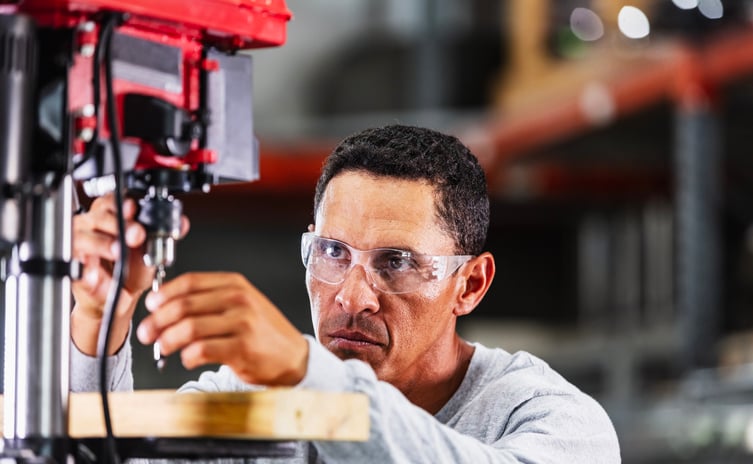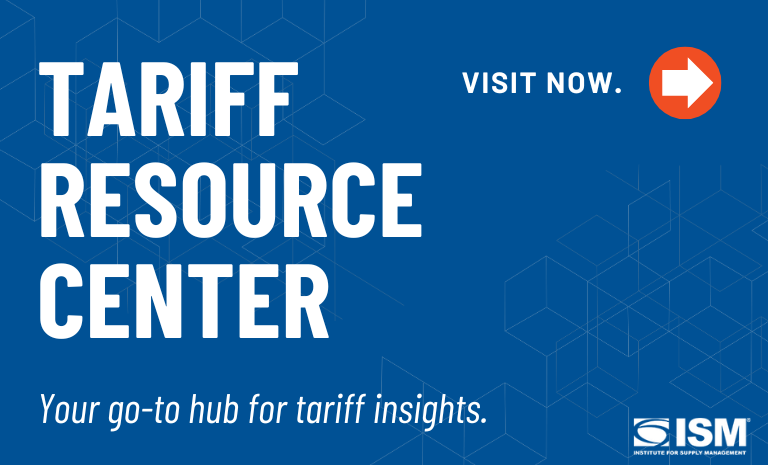Bringing Back Manufacturing: A Second Look

A recent Brookings Institution event offered two views of how manufacturing is faring in the U.S., given the tariffs agenda, geopolitical tension and supply chain disruption. The first panel discussed the need for workers, the impact of tariffs on operational costs, how metrics tell the manufacturing story, and the world exists in a global supply chain.
Not everything can be produced in U.S. — the country currently manufactures 67 percent of what it needs, said panelist Charles Crain, managing vice president of policy at the National Association of Manufacturers (NAM) during “Can Trump Bring Manufacturing Back to the U.S.?”
Still, the panel lauded that the “One Big Beautiful Bill” recently passed by Congress stopped tax increases on manufacturers that were to happen at the end of the year, potentially enabling more capital investment.
The event’s second panel offered a somewhat dimmer view of the situation while nevertheless framing possibilities to improve U.S. manufacturing.
Much of what the Trump administration has done so far through cuts and tariffs has reduced America’s economic resilience and economic dynamism, said Adam Hersh, senior economist at Economic Policy Institute, during the second panel. Broad-based tariffs have thrown businesses into turmoil, while gutting support for federal scientific research and attacking universities where innovation occurs while be costly in the long run, he said.
Although the manufacturing tax scheduled for year’s end was disbanded, the sweeping policy bill creates other issues. “Businesses don’t invest because the cost of capital is low,” he said. They do so because there’s a demand for the products they sell. Just lowering the cost of capital isn’t going to do anything to stimulate investment.”
Additionally, Hersh said, stripping out regulations “willy-nilly” won’t result in economic success; this will just transfer costs elsewhere, like to workers. He added that broad-based tariffs cause issues for downstream businesses.
“So I don’t have a lot of optimism about the direction this is going, but fortunately, these are all unforced policy errors,” he said. There will be costs to them even if they are reverse, he said, but if they were to be, a better way can be found to improve manufacturing in the U.S.
Tariffs and Imports
About half of what’s imported into the U.S. are inputs — raw materials, components, parts and the like — that are used in the production of other products, said another panelist, Colin Grabow, associate director of the Cato Institute’s Herbert A. Stiefel Center for Trade Policy Studies. “Roughly one-third of global trade is intrafirm,” he said. “These are companies that have operations dispersed around the world that take advantage of each location’s comparative advantage to officially produce and manufacture.”
Tariffs increase the cost of vital components. “I think if you want to increase manufacturing, you have to reduce tariffs, both for American exports and imports,” Grabow said.
Managing the Unpredictability
The third panelist, Leslie Taito, who deals with global supply chains every day in her role as executive vice president for business operations at Taco Comfort Solutions, said the current policies have created business instability. The stopping and starting of tariffs make it hard to plan.
“We just got out of the COVID hangover,” in which companies beefed up their inventories intentionally to service customers. Given the uncertainty and unpredictability about tariffs, that’s happening again, she said. It’s hard to run a solid, successful business where there is so much instability. Having stability would enable businesses to develop strategies and plan better for improving their manufacturing capabilities in the U.S.
“There’s a resilience in the manufacturing industry that we will figure it out,” she said.
Will manufacturing jobs return to the U.S.?
Manufacturing employment is not likely to return to historic levels in the U.S., Hersh said. That is in part due to international competition, he said, but a larger part is productivity growth in automation, which has resulted in greater production levels with fewer workers, he said.
Additionally, he said, he economy is basically at full employment, adding that manufacturing jobs aren’t perceived as attractive for a variety of reasons.
Taito disagreed, saying that “this is part of the challenge that manufacturers face: the representation of what manufacturing looks like. This is not a minimum wage job.” There are career pathways, training and more for workers.
Aside from that, whether manufacturing jobs come back depends “what jobs we want to come back,” she said. “I don’t think all manufacturing jobs will come back. But I think we can be very strategic about what some of those jobs look like and how they would add value into a manufacturing strategy.”
The U.S. should bring back manufacturing of key components, such as for health care and infrastructure, “that we know are missing,” Taito said. The U.S. needs to be specific and strategic about the capabilities it wants to have as a country, she said. In essence, there needs stability and predictability: a strategic plan that employers can follow to bring back manufacturing.

